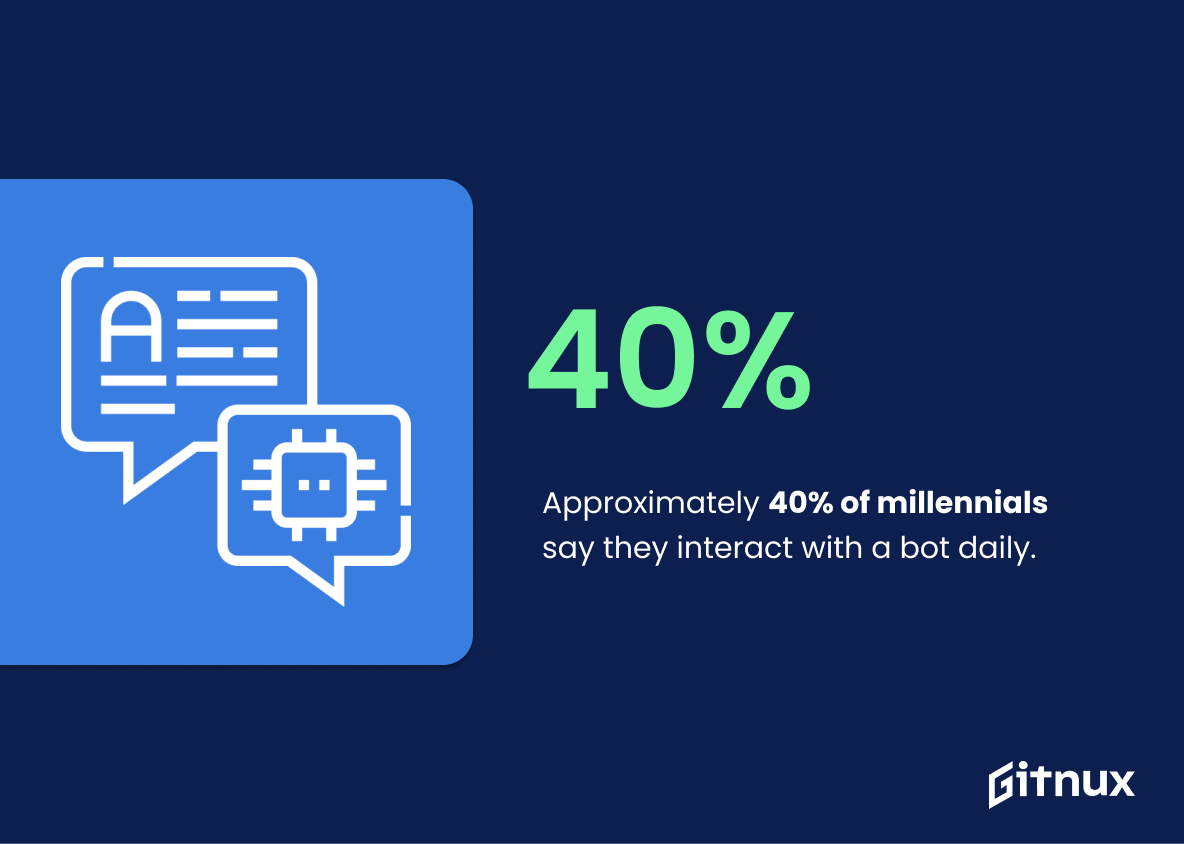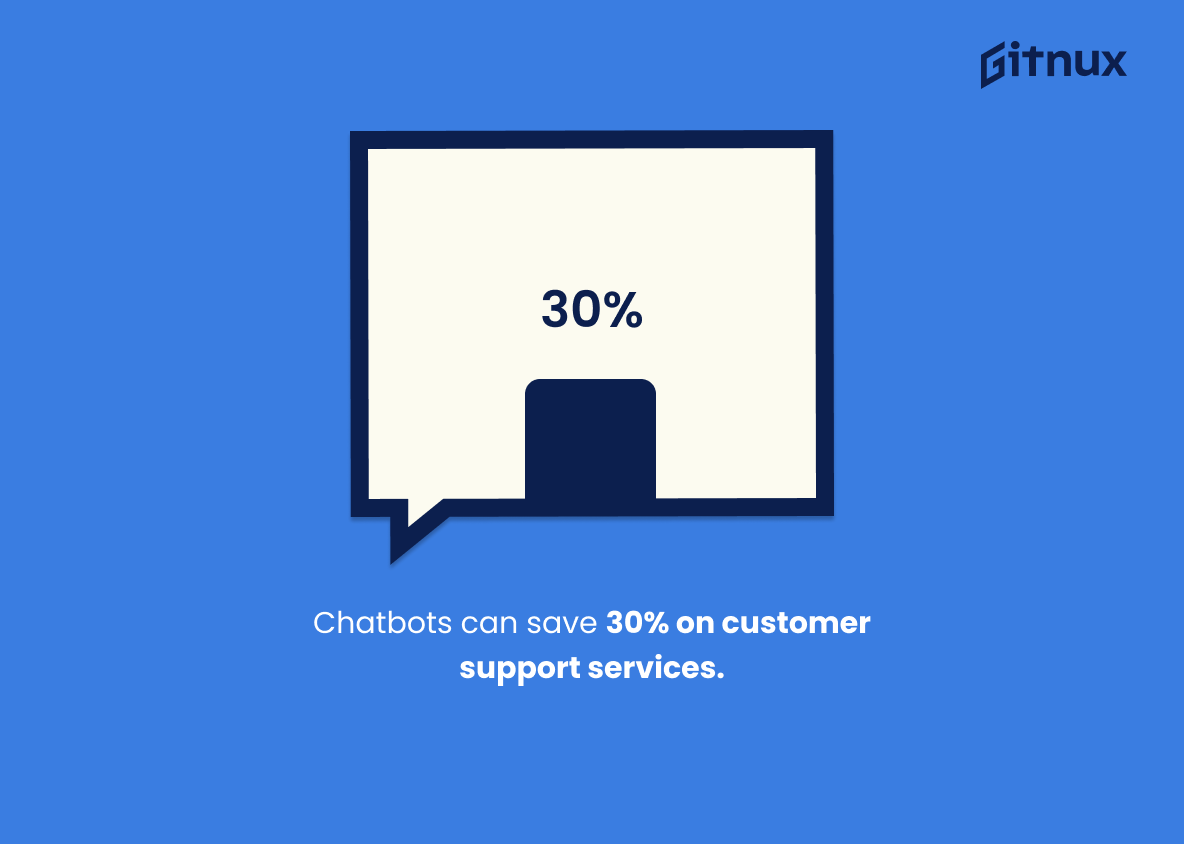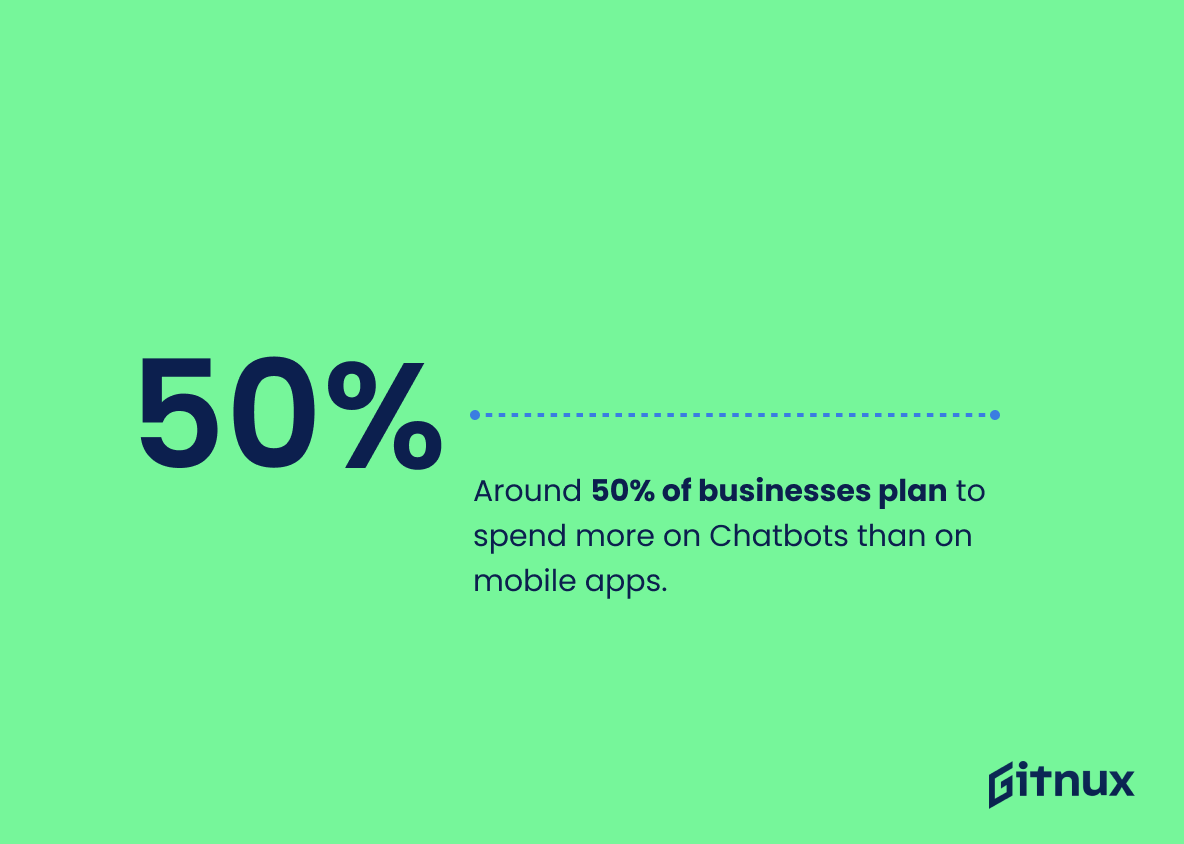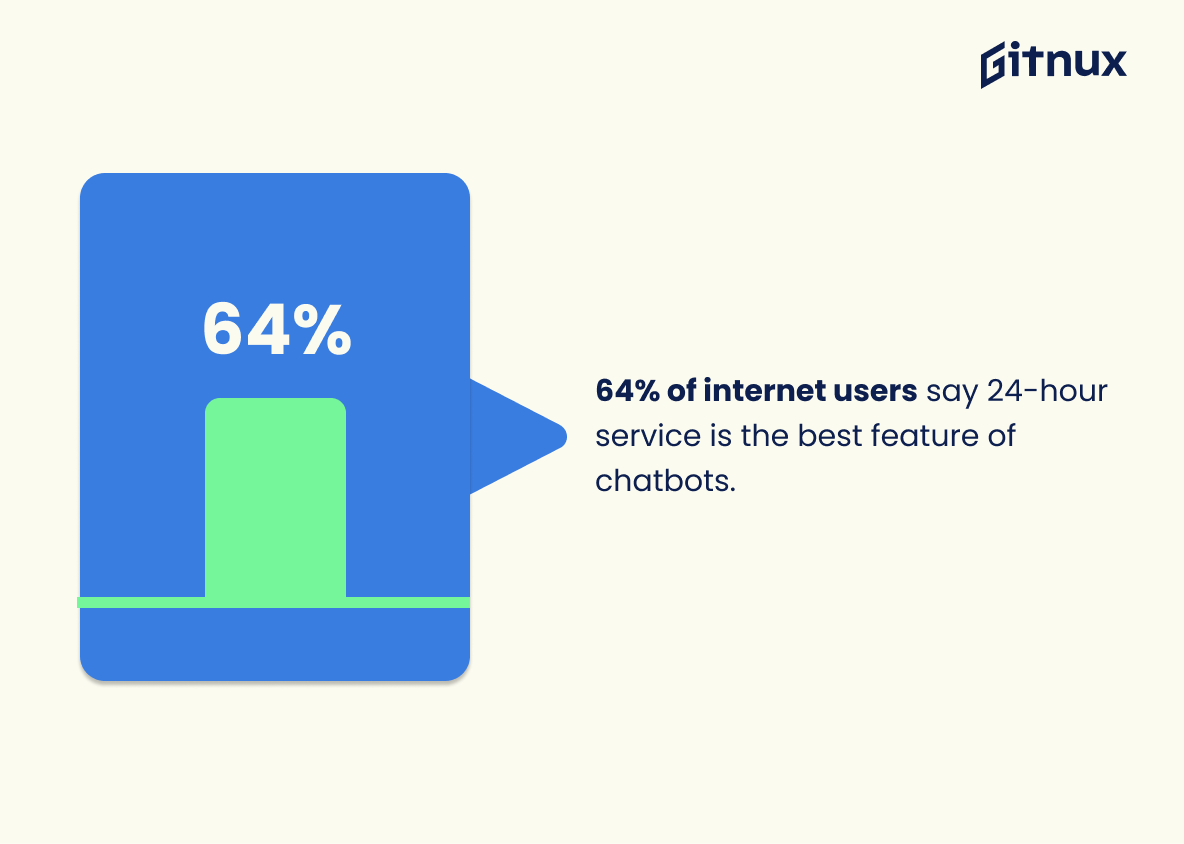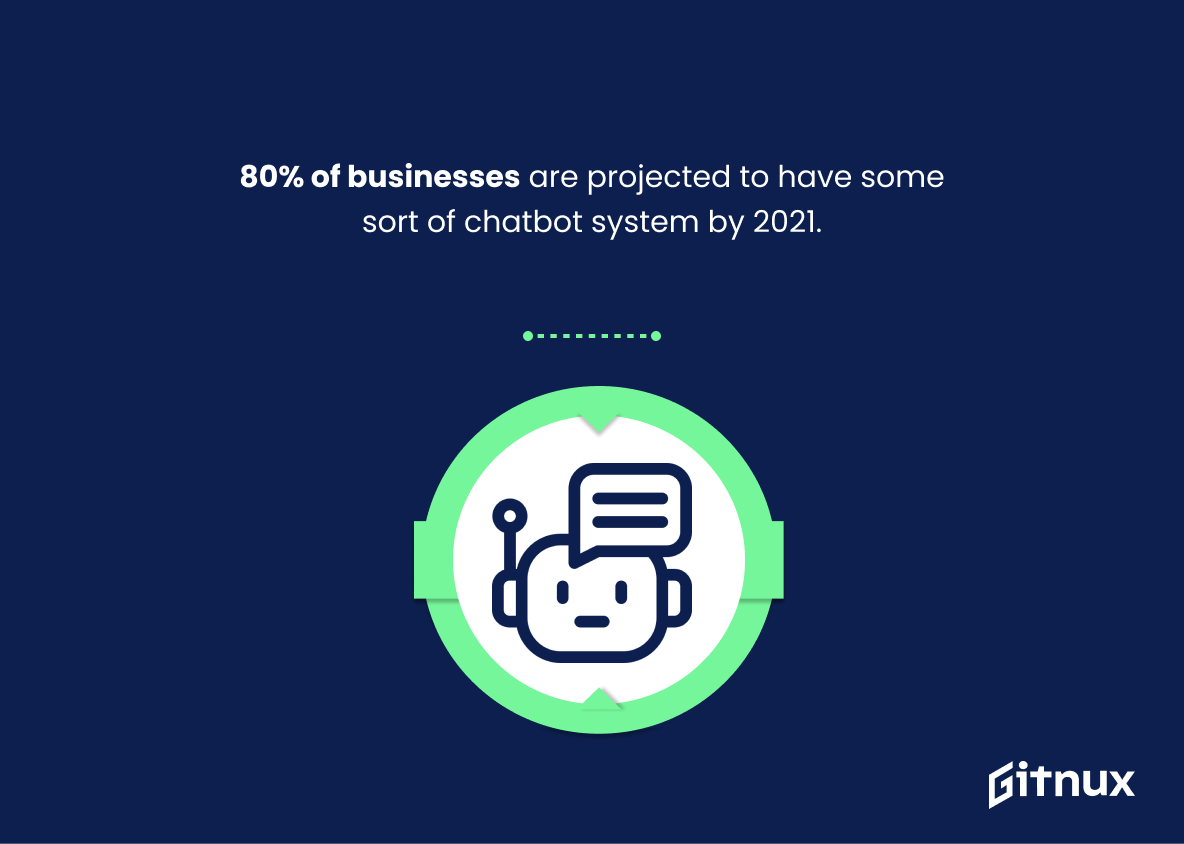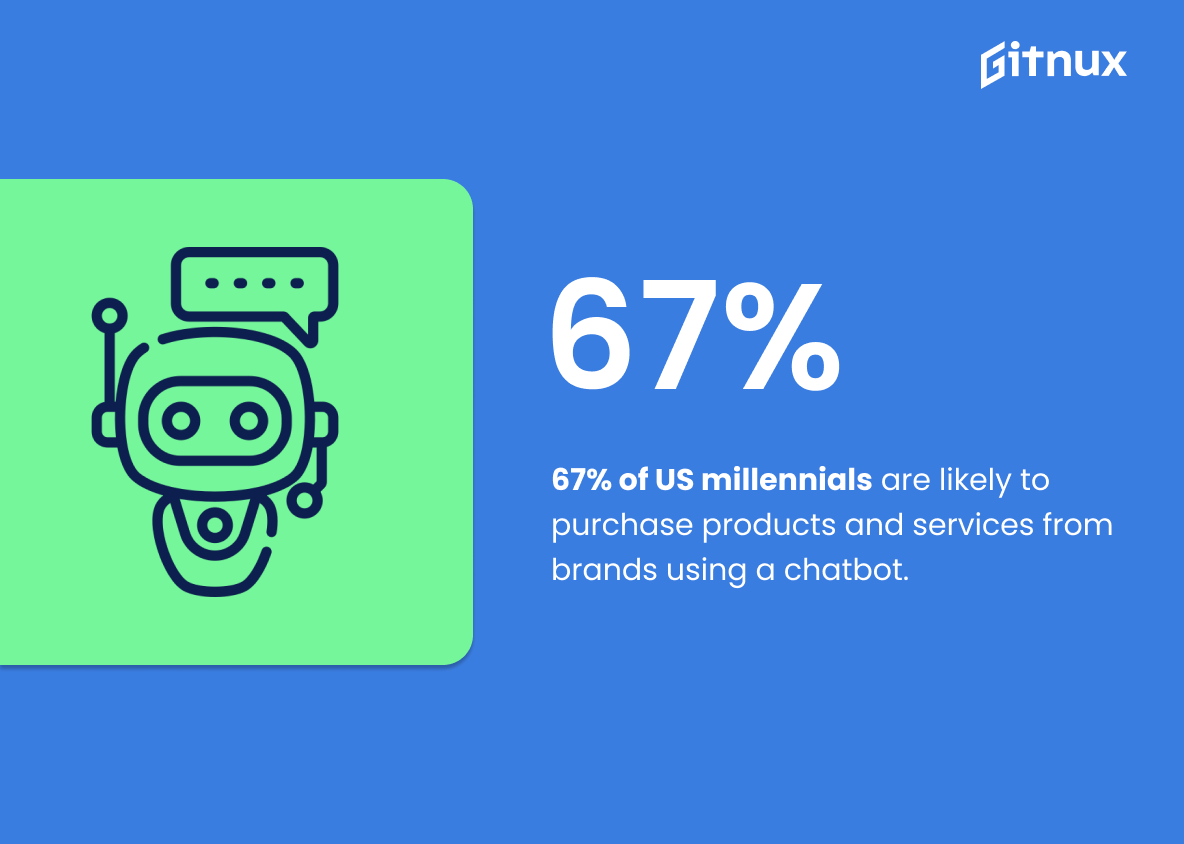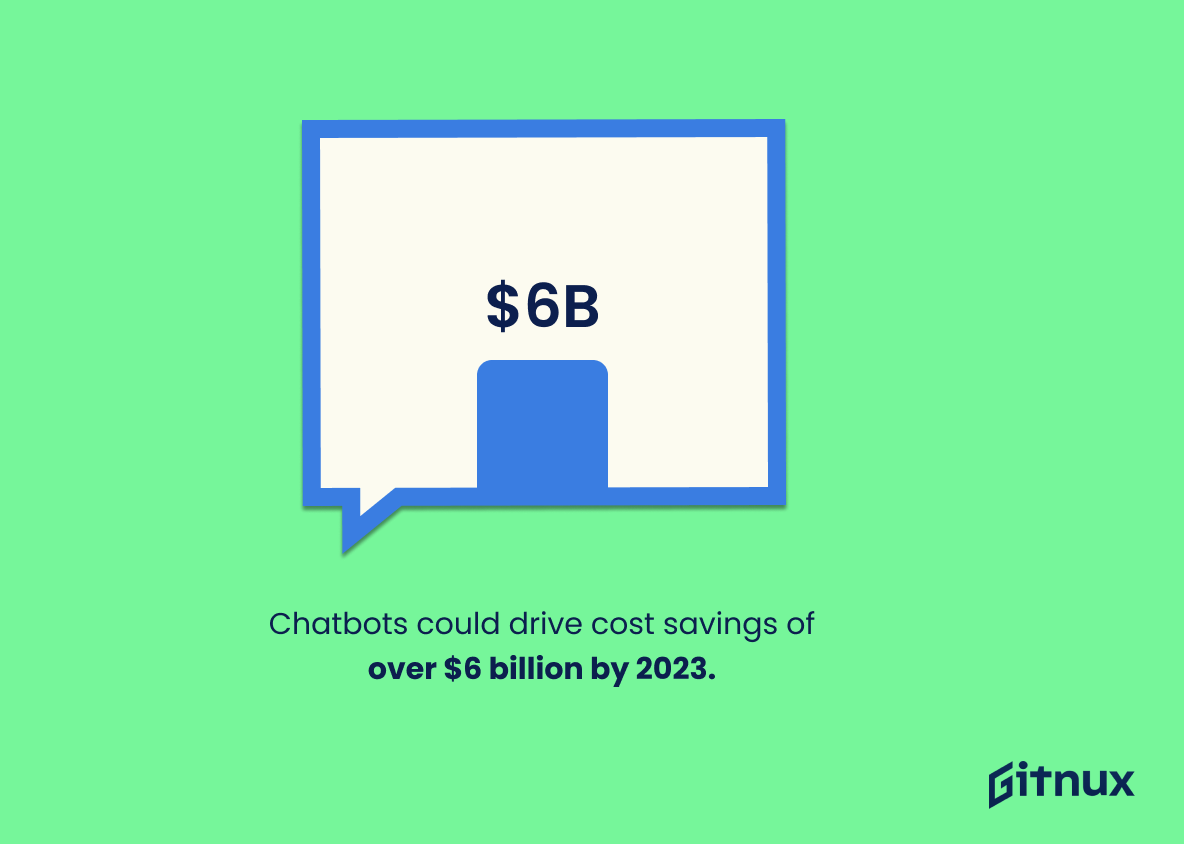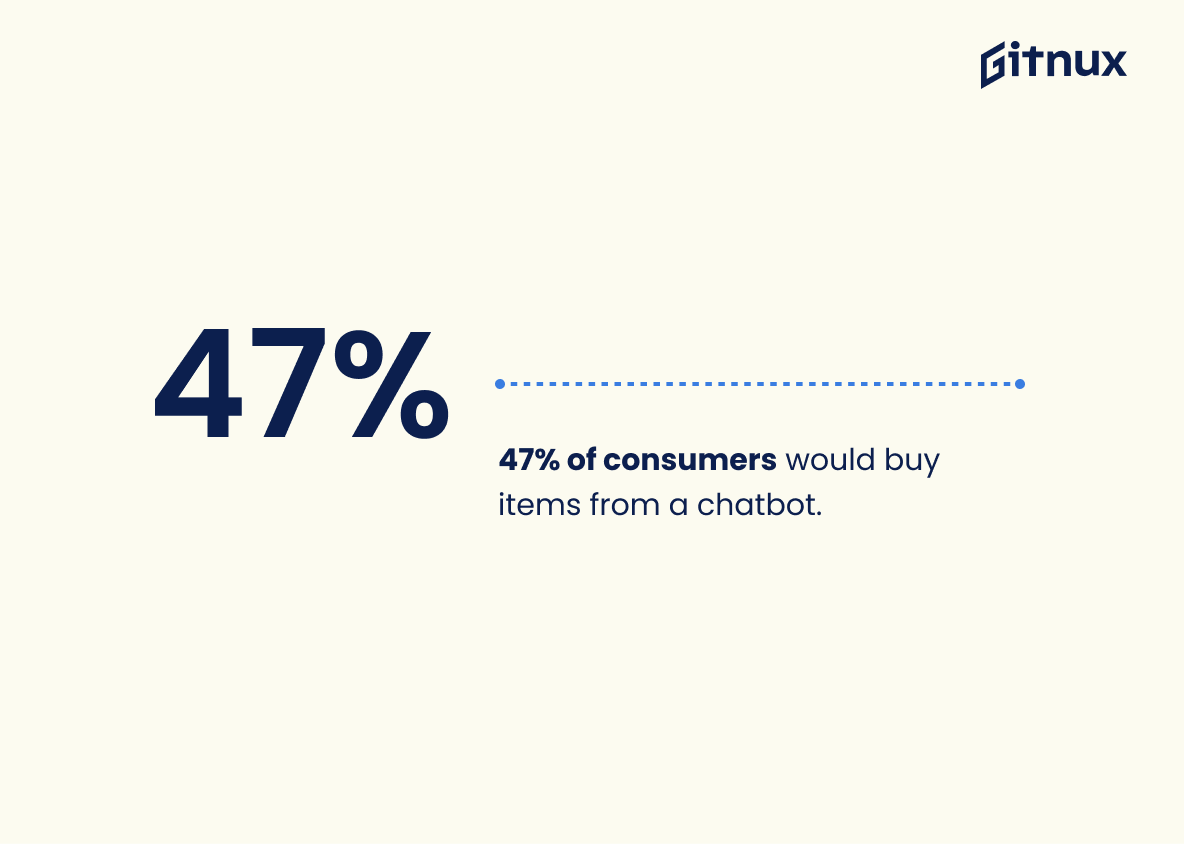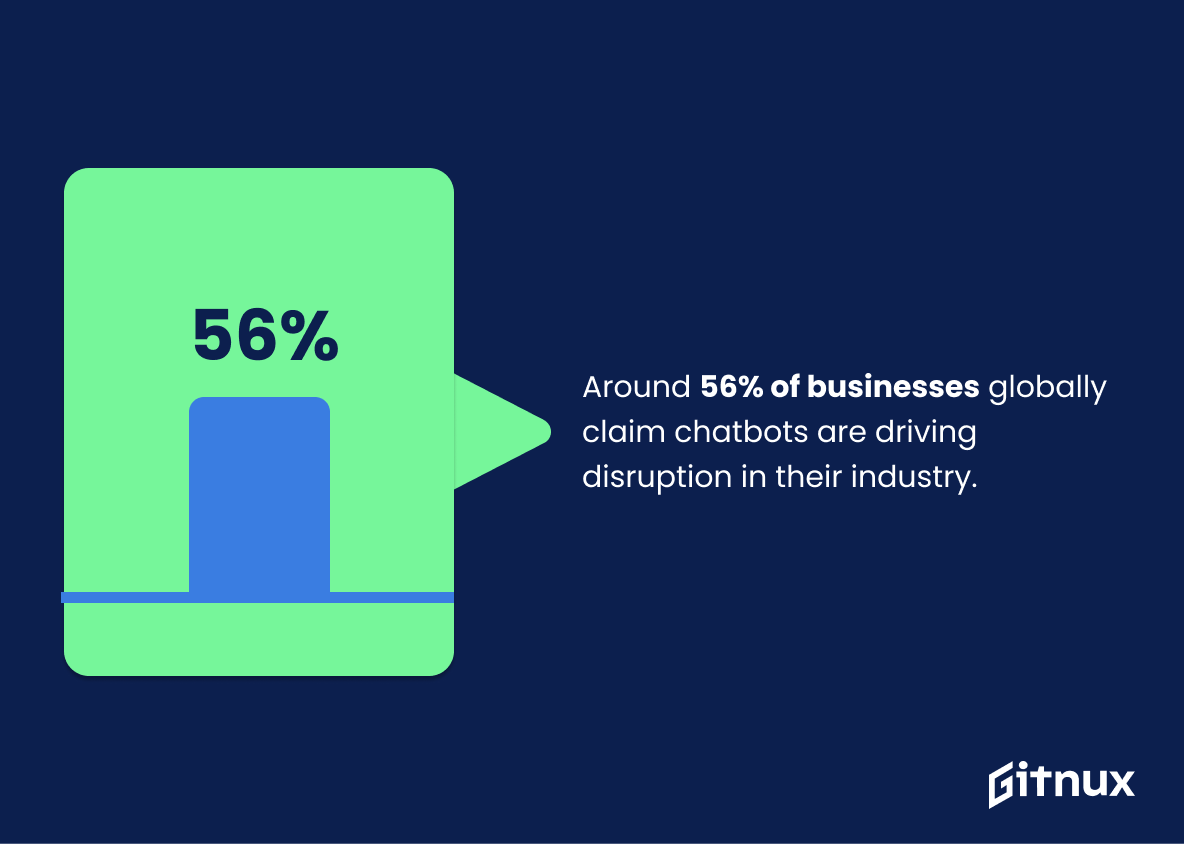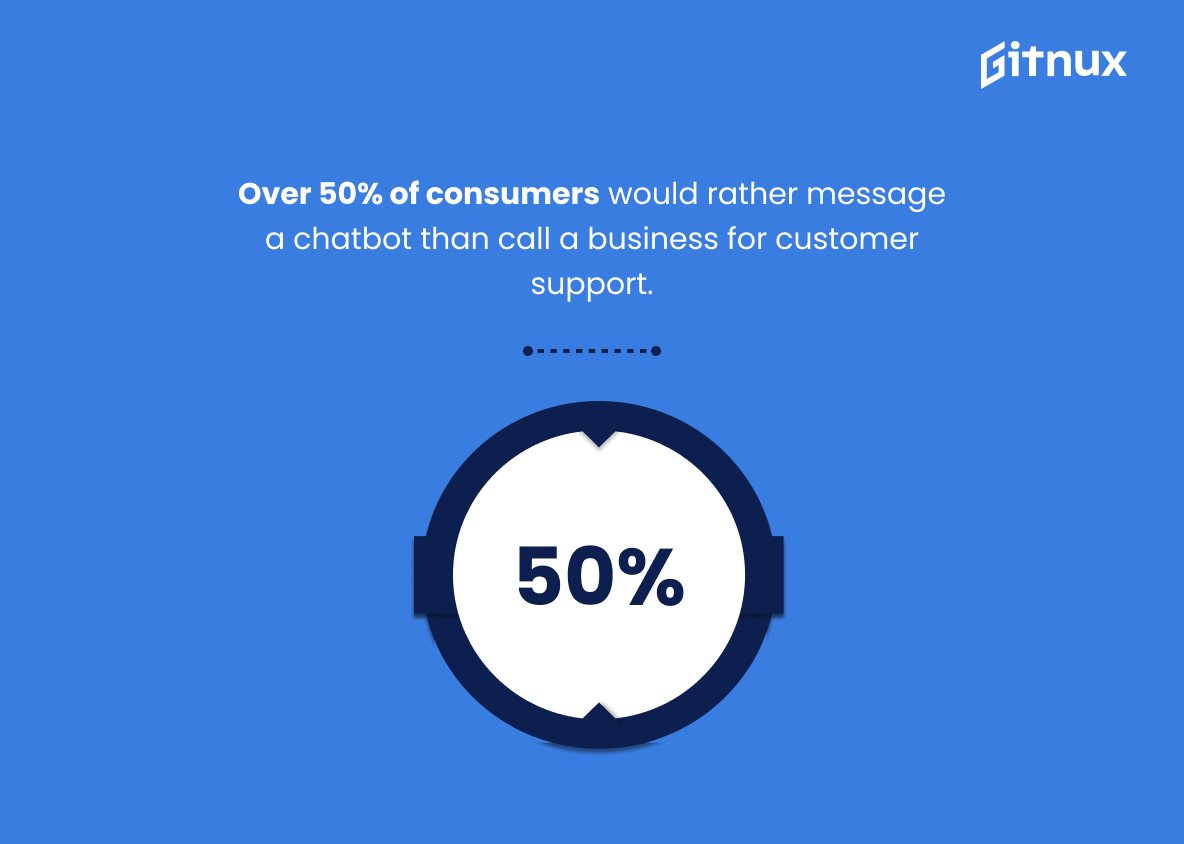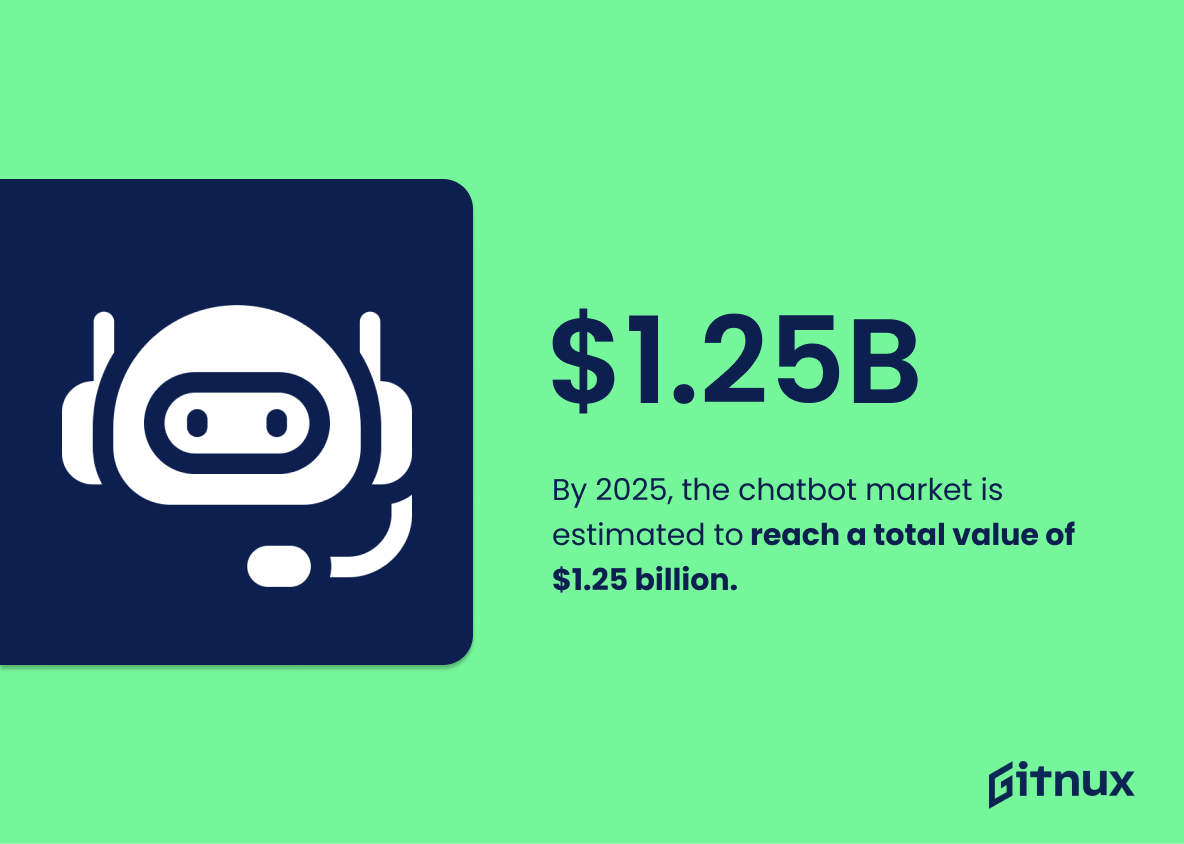As the world continues to ride the digital wave, there is an undeniably growing interest in AI technology and its multifaceted applications. One such application that is reshaping businesses’ customer interaction and service landscape is the chatbot. But, how are these virtual assistants performing in the global market? What are their impacts?
Whether you’re a marketing maven, a start-up enthusiast, or a tech aficionado, this blog post will unpack the trends, figures, and intriguing insights engulfing the world of Chatbot Statistics. Packed with data and key findings, we’ll disclose the real score behind the chatbots’ performance, proving why they’re not just a fleeting buzzword, but a transformative tool for businesses globally. So buckle up, and delve deep into the data-driven universe of chatbot statistics.
The Latest Chatbot Statistics Unveiled
Approximately 40% of millennials say they interact with a bot daily.
In the mission to decode the relevance of the statistic, ‘Approximately 40% of millennials interact with a bot daily’, to a blog post about Chatbot Statistics, it becomes crucial to understand the evolving digital habits of different generations. As digital natives, millennials represent a pivotal demographic in the world of technology, with their engagement patterns offering a crucial insight into future trends.
The statistic essentially paints a picture of a world where chatbots are seamlessly integrated into millennials’ daily lives, underlining the potential and influence of these AI-powered tools. Thus, in this blog post, this statistic acts as both a testament to the current popularity of chatbots, suggesting a high adoption rate among millennials, as well as a hint towards a future where such interactions could become the norm. Through this data, the article sheds light on the importance of chatbots, illustrating how essential they might be for businesses aiming to connect with this tech-savvy generation.
Chatbots can save 30% on customer support services.
Consider the potential of a 30% savings on customer support services through the adoption of chatbots as a stunning revelation in a sea of Chatbot Statistics. Beyond cost efficiency, this demonstrates the transformative power of chatbots. They aren’t just figurehead advancements flaunting AI, but robust utilities that dramatically influence a company’s bottom line.
This statistic literally shines a spotlight on chatbots as key players in the competitive business world. Leveraging them can enable firms to redistribute resources and focus more on improving core business operations while maintaining customer satisfaction. Essentially, it’s the secret ingredient for companies keen to streamline their business ventures while remaining customer-centric.
Around 50% of businesses plan to spend more on Chatbots than on mobile apps.
Highlighting the statistic ‘Around 50% of businesses plan to spend more on Chatbots than on mobile apps’, portrays an imminent shift in digital strategies being adopted by businesses. It serves as a magnetic insight, particularly for readers keeping pace with the evolutionary journey of business-customer interaction.
This prominent transition from mobile apps to Chatbots reveals compelling business intentions of catering to an increasingly digital savvy customer base, craving for real-time and efficient engagements. It emphasizes the growing importance and potential of AI-driven communication in transforming how businesses operate and engage with customers. Leaning into this understanding can arm the readers of our blog post with trends that can shape their respective digital strategies.
64% of internet users say 24-hour service is the best feature of chatbots.
Leveraging the power of the digital era, one of the undeniably compelling hallmarks of chatbots is the ability to provide unwavering, round-the-clock service. A hefty 64% of internet users vouch for this feature, illuminating the significance of maintaining uninterrupted availability in our increasingly connected world. This marked preference for 24-hour service cements chatbots’ position as the potential keystone in future customer service strategies.
As such, this statistic takes center stage in any chatbot-related discourse. Curating blogs teeming with such compelling data allows for a profound, evidence-based analysis of chatbot trends, projected usage, and their burgeoning importance in an ever-digital consumer world.
80% of businesses are projected to have some sort of chatbot system by 2021.
Imagine trekking through a thick forest of ever-evolving business practices, with your survival dependent on being agile and adaptive. Suddenly, you uncover a rooted prediction: a colossal 80% of businesses are projected to have integrated some form of chatbot system by 2021. Think of this not just as an impressive numerical incorporation, but also as a revealing indicator of an irresistible wave.
This overwhelming majority reflects an unfolding digital transformation across the business landscape. A future where chatbot-driven interactions are not just a luxury, but a necessity to maintain productive customer engagement. Consequently, for those curious or undecided on whether to adopt chatbot technology, this massive tilt in favor could be the guiding compass towards making an informed, strategic decision.
Within the blog post’s terrain, punctuating such a profound statistic intensifies the vitalness of chatbots. Not only does it bring into perspective the pace at which businesses are intensifying their digital footprints, it also provides a convincing testament to the promise and potential chatbots hold in reshaping the future of customer relations. Ignore this percentage at your own peril, as it is indicative of an epoch where chatbots are the thriving flora, and businesses not embracing this trend could risk becoming the decomposing leaves of yesteryear.
67% of US millennials are likely to purchase products and services from brands using a chatbot.
Delving into the depths of chatbot figures, we hit upon a compelling insight – a whopping 67% of US millennials demonstrate a preference for purchasing products and services from brands employing chatbots. This figure isn’t just a number, but a bearer of significant implications for the future of digital marketing. Seamlessly linking consumer behavior with technological advancements, it underscores a substantial shift in the purchasing decision process of this generation.
Flashing this statistic can incite a spark in marketers’ minds, triggering them to revolutionize their strategies to cater to this tech-savvy cohort. Without a doubt, it paves the way for an intuitive understanding of how chatbots could be the new age game-changers in customer acquisition and retention, affirming their place firmly in any write up on chatbot statistics. Witnessing the vast potential of chatbots through this figure, companies stand on the brink of a digital era which promotes a more interactive and personalized approach in engaging consumers.
Chatbots could drive cost savings of over $6 billion by 2023.
Surfing on the tide of technological advancement, the projection of chatbots driving cost savings of over $6 billion by 2023 happens to be both a headline-stealer and budget-pleaser, punctuating the discourse of Chatbot Statistics. In the realm of a blog post on the same topic, this staggering figure does not merely serve as an impressive number, but paints a visionary picture of substantial financial gain in the near horizon.
The titanic savings forecast garners attention towards the immense operational efficiency embodied by chatbots. Beyond being a beacon for cost-cutting, it exemplifies the transformative potential chatbots hold for businesses, carving out a path of economic sustainability in an increasingly digital age.
Moreover, this statistic acts as an emphatic testament to the return on investment that chatbots promise, amplifying the appeal for potential investors or businesses on the fence about integrating chatbot technology. This potent blend of fiscal foresight brightens the spotlight on the evolving role of chatbots, thereby making it a crucial piece of the blog post’s narrative fabric.
47% of consumers would buy items from a chatbot.
Picturing the blooming interest with chatbots, an intriguing fact presents itself, highlighting that nearly 47% of consumers would actually make purchases through a chatbot. This paints a more vivid portrait of the potential that chatbots hold in reshaping the way businesses sell and consumers buy. Amplifying the engagement around online shopping, this statistic becomes a testament to the growing trust and acceptance for AI interfaces in our everyday transactions.
With nearly half of the consumers showing readiness to use chatbots for shopping, businesses now have all the more reasons to incorporate this technology at the heart of their digital strategy. Therefore, this statistic shines a spotlight on the evolving consumer behavior and the growing influence of machine learning on the virtual marketplace.
Around 56% of businesses globally claim chatbots are driving disruption in their industry.
Dive into the turbulent currents of digital disruption where the innovative vessel, chatbots, rule the wave that 56% of global businesses recognize as shapeshifting their industry. A business-scape once bound by human limitations now experiences a profound transformation orchestrated by these automated conversational marvels, challenging and enhancing customer interactions.
This kind of percentage shows a clear shift towards artificial intelligence-driven customer service, underscoring not only the acceptance but also the reliance of businesses on chatbot technology. Consequently, it serves as a beacon, illuminating the chatbot’s evolving stature from a disruptive technology to a game-changing necessity in today’s digital world. Unmasking the profound impact of chatbots, this stat effortlessly embeds itself in the heart of our discussion, casting an intriguing, future-forward light on chatbot statistics.
Over 50% of consumers would rather message a chatbot than call a business for customer support.
Shining a spotlight on a highly relevant fact in the world of customer relationship management, this statistic unequivocally showcases the ascent of chatbots to the center stage of professional customer support. It captures how more than half of the users lean towards messaging a chatbot as opposed to the traditional way of calling a business, thus underscoring the dramatic shift in consumer preferences.
It is this palpable transition that signals businesses to integrate chatbots into their customer service strategy empirically, lest they fall behind in the race to offer seamless customer experiences. Embellishing a blog post on Chatbot Statistics, this precise piece of information not only makes the narrative more compelling but also provides the business world with a valuable barometer of current customer service realities.
By 2025, the chatbot market is estimated to reach a total value of $1.25 billion.
Using a sophisticated telescope of future trends, this captivating projection of the chatbot market spiraling up to a whopping $1.25 billion by 2025 injects a sense of enormity and potential in our outlook for this technology.
As we navigate through the canvas of chatbot statistics in this blog, this astronomical figure puts a spotlight on the ever-accelerating adoption and development of chatbots. It also underlines the lucrative commercial possibilities ripe for savvy enterprises, signaling a dramatic shift in how businesses interact and serve their customers.
Conclusion
In the continuously evolving digital landscape, chatbots have clearly carved a niche for themselves. The statistics elucidated in this blog underscore the growing significance and acceptance of chatbots across various industries. They are not just perceived as a novel innovation anymore but more as a crucial constituent of effective marketing, customer support, and user interaction strategies.
Irrespective of whether you are a small business or a conglomerate, embracing chatbots can offer you a competitive edge, enhanced customer experiences, and increased operational efficiency. As the trend today indicates, the future is inevitably tilting towards more automated, seamless, and personalized conversations. It’s high time to adapt or be left behind.
References
0. – https://www.mobilemonkey.com
1. – https://www.www.invespcro.com
2. – https://www.www.ubisend.com
3. – https://www.ubisend.com
4. – https://www.www.hubspot.com
5. – https://www.www.salesforce.com
6. – https://www.www.marketsandmarkets.com
7. – https://www.relayto.com
8. – https://www.www.juniperresearch.com
9. – https://www.outgrow.co
10. – https://www.www.ibm.com
